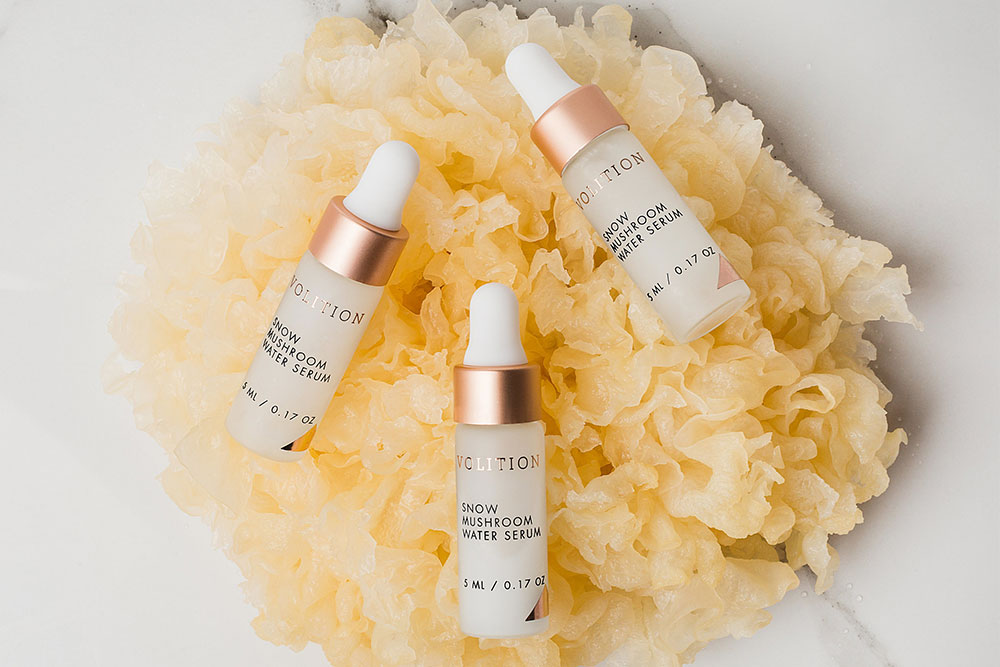What the F is… snow mushroom?

We’re used to wacky trends, vegetables and milks being treated as the new ‘big thing’ in wellness, so hearing snow mushroom was the next ingredient we should be slathering on our skin was no surprise — especially on the back of the mushroom boom.
We caught up with dermatologists Dr. Astrid Brodd and Dr. Ylva Ohlsson, who work with Previse Skincare, to find out what’s up with fungi for the face…
What is snow mushroom?
Scientifically named Tremella fuciformis, Snow Mushroom a.k.a (snow fungus, snow ear, silver ear fungus and white jelly mushroom) is a species of fungus which produces white, frond-like, gelatinous basidiocarps or fruiting bodies.
WHERE CAN IT BE FOUND?
Native or natural habitats are mainly tropical and subtropical, but they extend into temperate areas in Asia and North America. It is known throughout South and Central America, the Caribbean, parts of North America, sub-Saharan Africa, southern and eastern Asia, Australia, New Zealand and the Pacific Islands.
Now commercially produced, with the first cultivation believed to have been in China, Snow Mushroom mainly grows on the dead branches of broadleaf trees.
WHAT ARE THE BENEFITS FOR SKIN?
Tremella fuciformis is increasingly being used in select, commercial Japanese and Chinese beauty products.
The Snow Mushroom behaves much like hyaluronic acid; acting as a humectant, the fungus pulls moisture to the skin. Research suggests it can hold up to 1,000 times its weight in water. Volition Beauty has just recently packed their serum full of the new buzzy ingredient calling it “Mother Nature’s moisture magnet”.
WHAT’S THE HISTORY OF SNOW MUSHROOM AND HOW IT CAME TO BE USED IN SKINCARE?
Reports of the fungus being used in skin care applications date back to the early 1800s, with known cultivation in China starting the early 1900s due to popularity in Chinese cuisine and ancient medicine.
However it is only recently the fungus has gained a reputation outside of Asia; hitting the skincare market in the last few years, following plant-based research studies on skin benefits — including a study by The National Center for Biotechnology Information.








